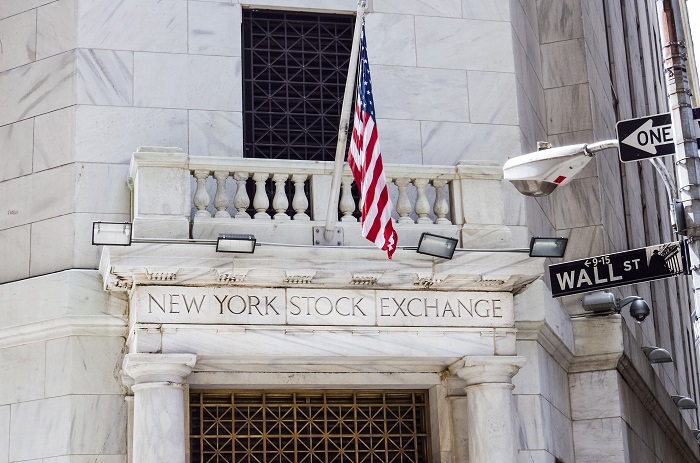economy online news
By Damian J. Troise and Alex Veiga AP Business Writers
Stocks ended solidly higher and bond yields rose Friday as Wall Street welcomed a surprisingly strong U.S. jobs report. online news
The S&P 500 rose 1.1%, making up most of the loss from the previous day and moving closer to its record high set last week. The benchmark index still posted its first weekly loss in three weeks.
The Dow Jones Industrial Average rose 0.8% and the Nasdaq composite gained 1.2%.
Technology companies accounted for a big share of the rally. Chipmaking giant Nvidia rose 2.4% and Google’s parent company, Alphabet, rose 1.3%.
The gains were broad, with every sector in the S&P 500 finishing in the green.
U.S. employers added a surprisingly strong 303,000 workers to their payrolls in March, according to a government report on Friday. The strong job market has helped fuel consumer spending and earnings growth for businesses, amounting to strong economic growth overall.
economy online news
The robust job market has also sparked concerns about inflation creeping higher, which could delay any rate cuts by the Federal Reserve. However, Friday’s report showed that wages rose a modest 0.3% for the month, which puts less upward pressure on inflation, and Wall Street still expects the Fed to begin cutting rates in June.
Friday’s gains followed a late-day slump in stocks on Thursday after a Fed official unsettled investors by questioning whether the central bank needs to cut rates at all this year amid a strong economy.
Treasury yields climbed following the jobs report. The yield on the 10-year Treasury rose to 4.40% from 4.31% just before the report was released. The two-year yield, which moves more on expectations for the Fed, rose to 4.75% from 4.65% just prior to the report.
The bond market may be signaling concern about interest rates staying higher for longer, but the stock market seems to be accepting the strong jobs report as good news, with consumer spending and corporate profits remaining important for investors.
“As long as the market gets one or two cuts and the Fed doesn’t leave rates unchanged, that’s good enough for equity investors,” said Chris Zaccarelli, chief investment officer for Independent Advisor Alliance.
The Fed’s benchmark interest rate remains at its highest level in two decades as a result of historic rate hikes meant to tame inflation. The strategy has seemingly worked so far, with overall consumer prices falling drastically from a peak in 2022. Inflation fell to a rate of 3.2% in February. It was as a high as 9.1% in the middle of 2022.
Strong employment and consumer spending have raised concerns about getting inflation below 3% and heading toward the Fed’s target rate of 2% won’t be easy. They also raise the potential for inflation to reheat.
economy online news
The Fed and investors will get another key update on inflation next week when the government releases its March report on consumer prices.
Wall Street has a slightly better than even bet that the Fed will trim rates at its June meeting, according to CME’s FedWatch Tool. That’s down from 65.9% on Thursday and 72% a month ago.
All told, the S&P 500 rose 57.13 points to 5,204.34. The Dow added 307.06 points to 38,904.04, and the Nasdaq gained 199.44 points to 16,248.52.
The market was mostly quiet elsewhere with the latest round of corporate earnings set to heat up in the next few weeks.
Johnson & Johnson slipped 0.1% after the pharmaceutical giant said it was buying the medical technology company Shockwave in a deal worth about $13 billion.
Apple edged up 0.5% after announcing that it is laying off more than 600 workers in California, marking its first big wave of post-pandemic job cuts amid a broader wave of tech industry consolidation. Companies in the tech sector have been slashing their workforces for two years, but the actions have had little impact on the broader employment market.
In energy markets, the price of U.S. crude oil settled 0.4% higher. It’s up just over 20% so far this year as demand remains robust.
Markets in Europe and Asia fell.
AP Business Writers Yuri Kageyama and Matt Ott contributed to this report.
The Associated Press. All rights are reserved.
economy online news
Notes from APS Radio News
Often analysts maintain that, everything else being the same, stock prices tend to fall, in the context of a strong jobs report.
They say that when the economy is robust, higher inflation rates often increase.
In the event of higher rates of inflation, the central bank, or in this case, the Federal Reserve, is more wont to avoid reductions in interest rates or is less likely to avoid increases in interest rates.
Not infrequently, after a central bank increases interest rates, stock markets experience a fall in prices.
Reportedly because of what was being called a “pandemic”, a number of the world’s central banks embarked on massive programs of monetary expansion, starting in late February and early March of 2020.
For its part, between the early part of March of 2020 to over a year later, the US Federal Reserve added over $4 trillion to its holdings, by purchasing billions of dollars’ worth of Treasury bonds and corporate bonds each month during that period.
As well, at that time it kept interest rates rather low.
Other central banks, including the Bank of Japan and the European Central Bank, followed similar policies.
In addition, during that period many countries engaged in lockdowns; many small and medium-sized businesses and enterprises were shuttered by way of orders issued by public health officials, politicians and various administrators.
One of the direct causes of those shutdowns was the development of shortages.
According to a number of economists, the combination of shortages of various goods and services and massive programs of “quantitative easing” led to substantially higher rates of inflation.
In consequence of shuttered economies and higher rates of inflation in the first world, less developed countries suffered greatly, due, in part, to shortages of supplies and due to lowered demand.
For some time, in its articles about China, The Wall Street Journal has pointed to “covid” related lockdowns as being one of the major causes of China’s downturn in its economy.
In the US, by October of 2020, over 100,000 businesses had been shuttered by way of lockdowns
economy online news


